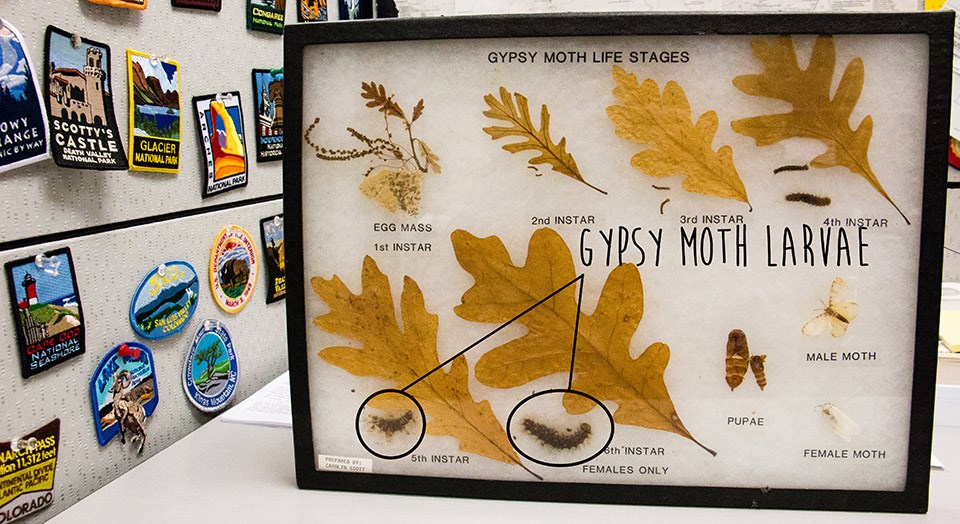Last updated: March 8, 2018
Article
#Sciencedeskdigs: Gypsy Moth Larvae

NPS Photo/M.Reed
Tell us more!
For over a hundred years, the Gypsy moth has plagued forests across the northeastern United States. Brought to the US in an attempt to start a silkworm industry, this invasive forest pest attacks over several hundred species of trees but especially likes aspen and oak trees. Tree damage is caused by the larval stage of this insect, or caterpillars who can eat the leaves of the tree down to a stem.
I use this gypsy moth display as an IPM tool to educate resource managers and park visitors on prevention and detection of this invasive forest pest. In the case of Gypsy moth, education and early detection reduces the likelihood of having to use pesticides. It’s not uncommon to find trained resource managers in national parks scouting for early signs of infestation during the fall/winter. This time of year is when the egg masses are easiest to spot.
Describe your workplace in one word:
Inspirational. The things I keep on my desk are examples of what I do (the gypsy moth display) and why I do it (all the patches from the parks I have been to) and they keep me connected to the special places and natural resources I work to protect.
